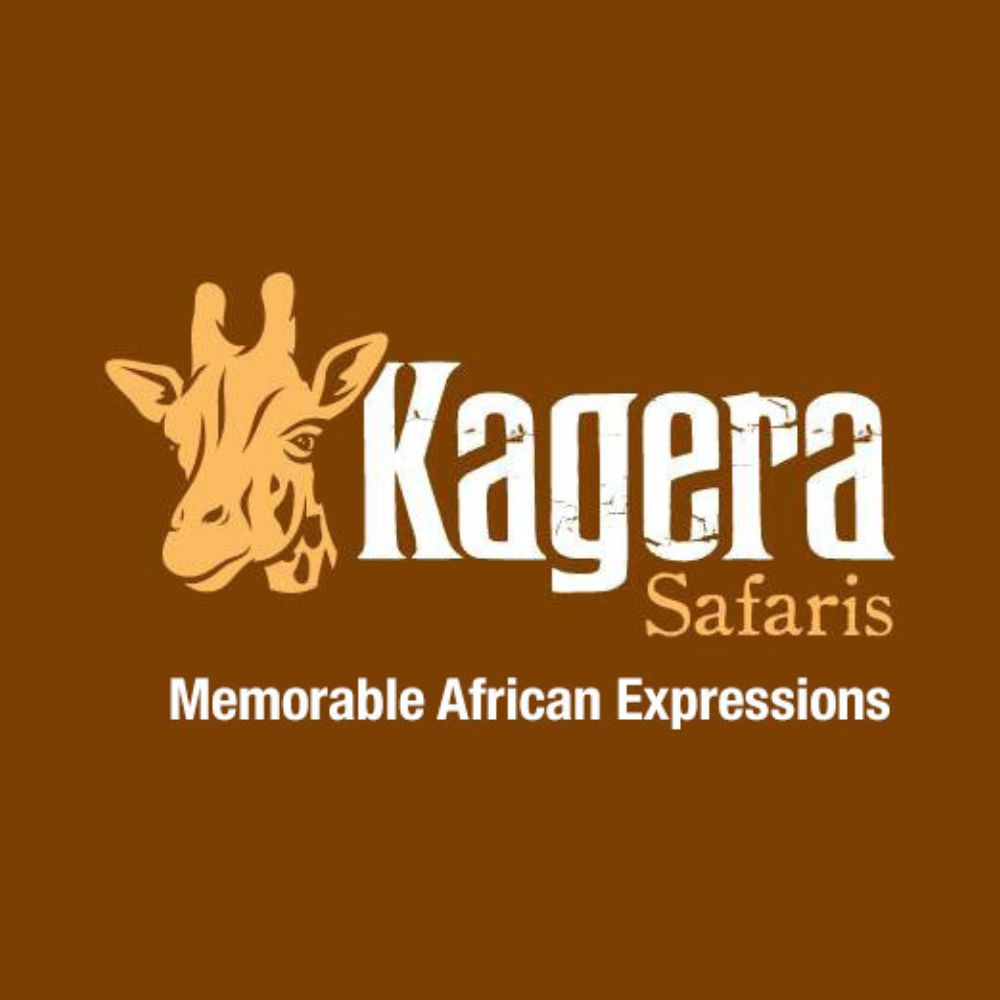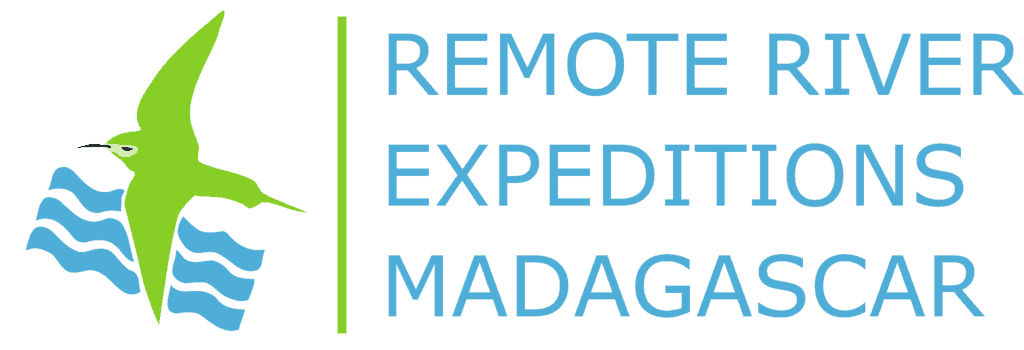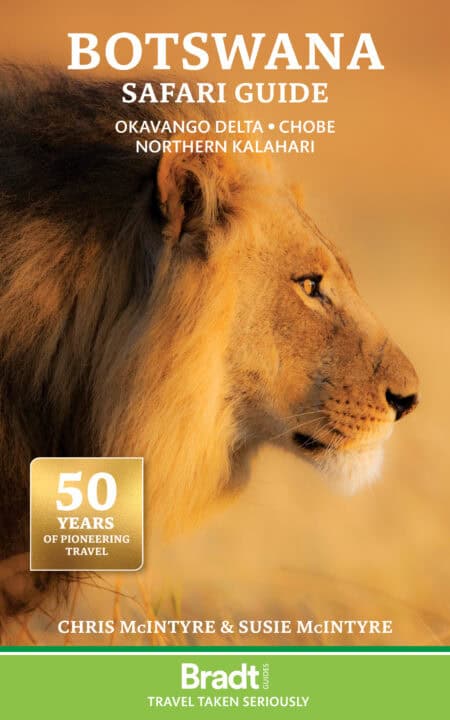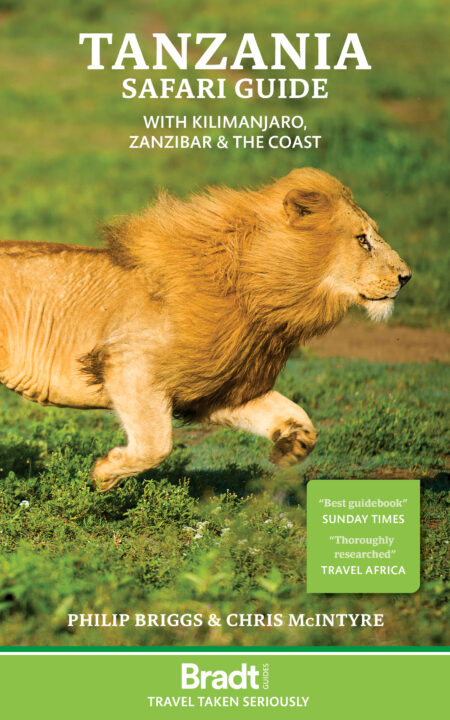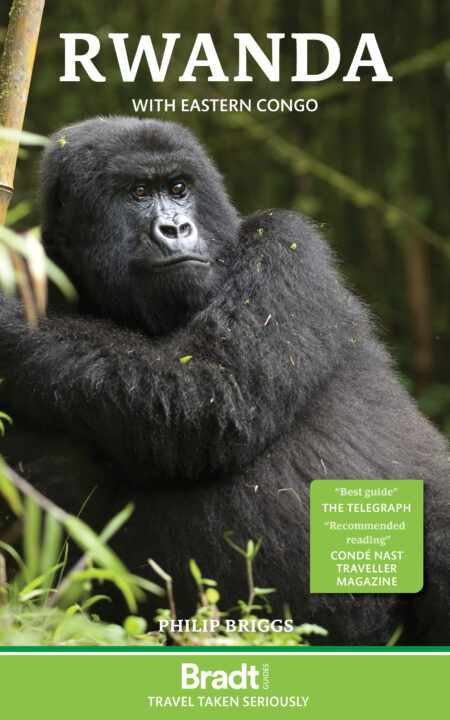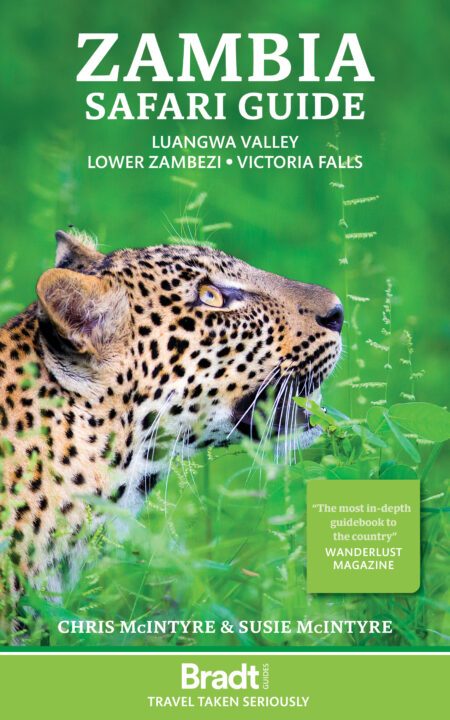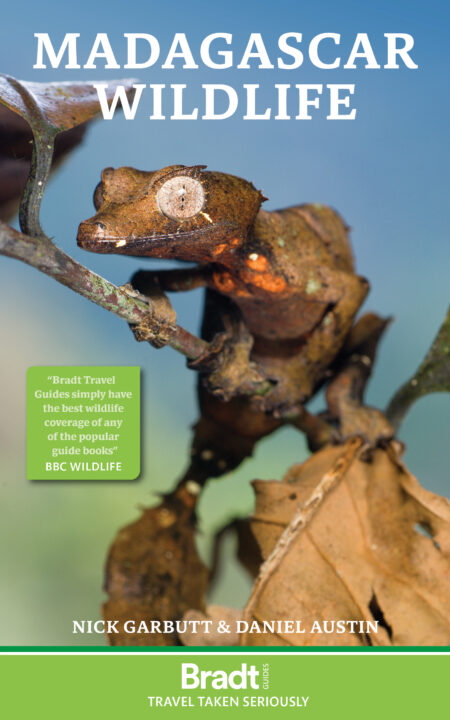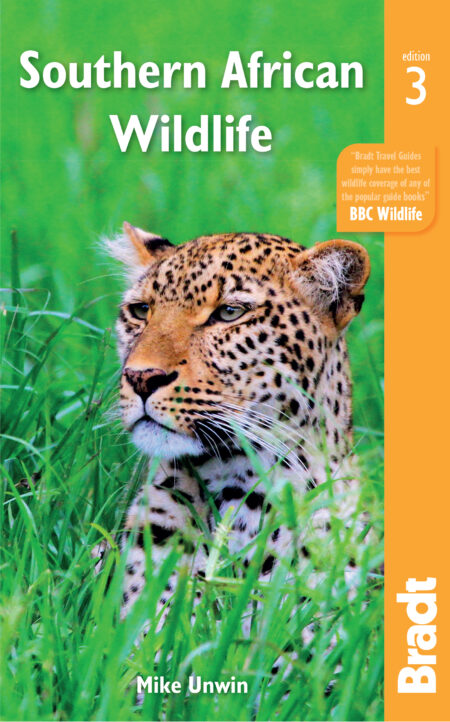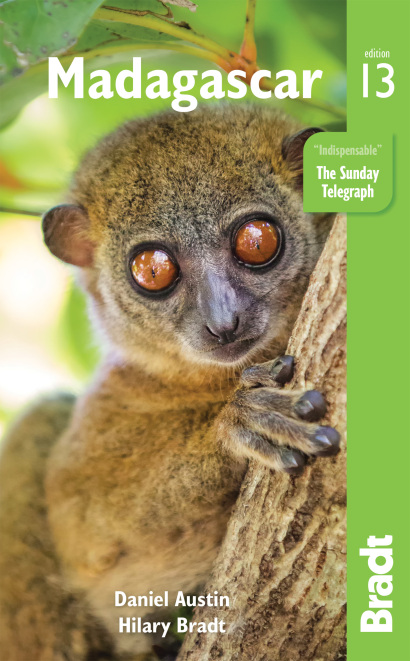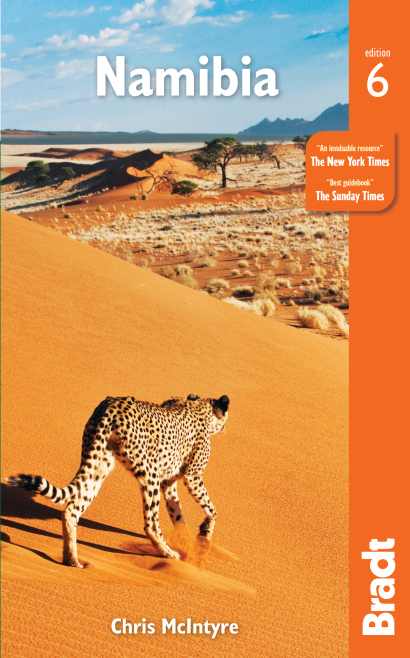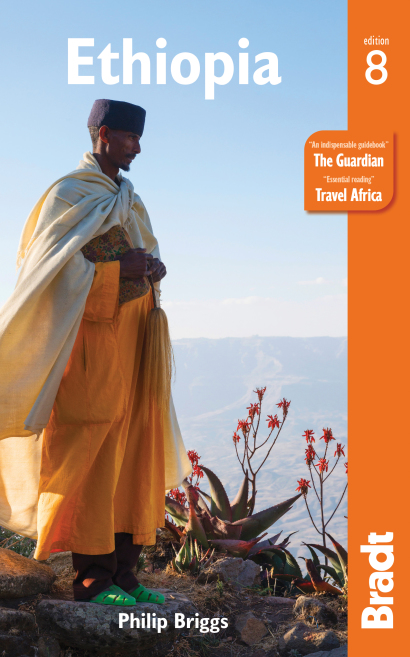Here at Bradt, we believe the best safaris in Africa offer more than just ticking off a list – they immerse you in the heartbeat of the wilderness. They invite you to experience vast savannahs, dense jungles, and endless untamed skies.
Safaris come in many shapes and sizes, showcasing wildlife both big and small.
We understand it can be overwhelming to choose where to begin. That’s why we’ve curated a selection of Africa’s top safaris. Some are iconic, while others may surprise you. But each one invites you to explore, marvel at nature’s beauty, and dream bigger.
Welcome to Bradt’s collection of the finest safaris in Africa.
The best safaris in Africa
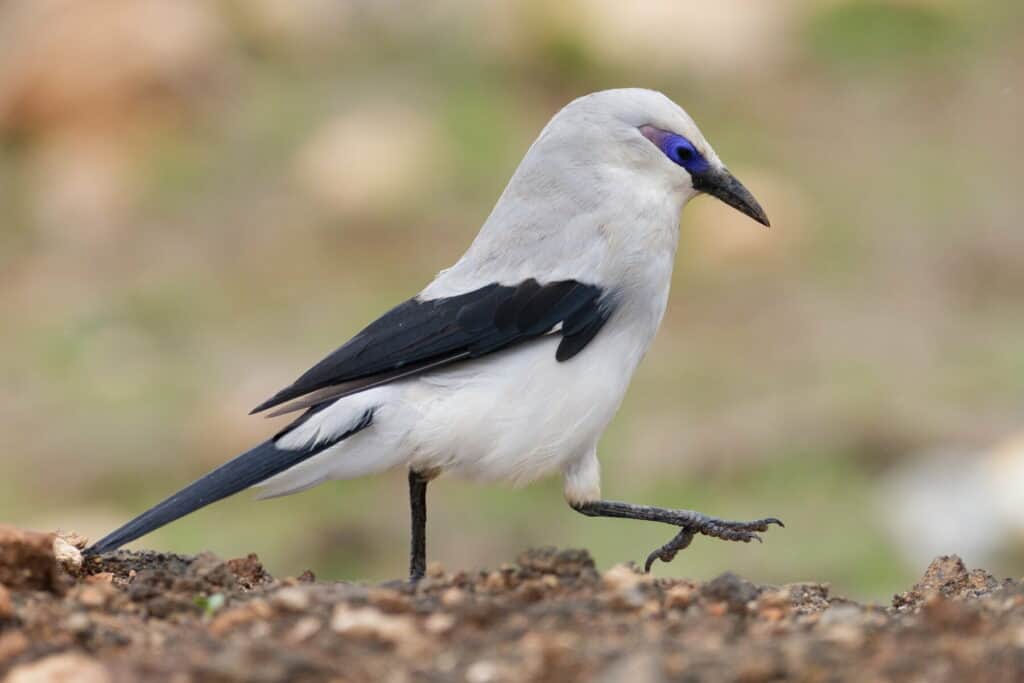
Go birding in Ethiopia
Trade the Big Five for vivid plumage, high-altitude lakes, and sweeping Rift Valley vistas on a birdwatching safari in Ethiopia.
Home to over 860 bird species, Ethiopia is a dream for avid birders. More than 30 of these species are found nowhere else on earth, making the country a hotspot for endemic wildlife. Ethiopia’s diverse ecosystems – from the lush highlands to the arid lowlands — provide a perfect habitat for species as unique as the striking blue-winged goose and the enigmatic Ruspoli’s turaco.
Bale Mountains National Park is a must-visit for any bird watching safari. Nestled in the Ethiopian Highlands, this park offers a chance to spot the endemic Abyssinian catbird and wattled ibis, while the rare and regal Ethiopian wolf prowls the grasslands. The Afro-alpine moorlands of Bale are home to species adapted to life at high altitudes, creating a truly unique safari experience.
Venture to the Rift Valley lakes, such as Lake Ziway or Lake Langano, and you’ll find a wealth of birdlife thriving in the wetlands. Watch pelicans, flamingos, and African fish eagles soaring over the water, their vibrant colours reflecting in the shimmering lakes. It’s a bird lover’s paradise, with every turn revealing a new and spectacular sight.
Ethiopia’s birdwatching is not just about spotting species – it’s about immersing yourself in landscapes steeped in ancient history and culture. From the rock-hewn churches of Lalibela to the green peaks of the Simien Mountains, this journey is as rich in heritage as it is in biodiversity.
How to do it
The best time for birdwatching in Ethiopia is from November to February, when migratory birds arrive and the weather is cool and dry. Key birdwatching sites such as Bale Mountains National Park and the Rift Valley lakes are accessible via domestic flights from Addis Ababa. Keep in mind that some areas have basic infrastructure, so travel with a guide or tour operator specialising in Ethiopian safaris to ensure a seamless experience.
Many of the endemic species are found in specific regions, so planning your trip with birding hotspots in mind is essential. Ensure that your safari supports conservation efforts to protect these vital ecosystems and their feathered residents.
Awaze Tours runs several birding excursions throughout the year. A popular example is the 15 day/14 night ‘Birding in Ethiopia Tour’ which begins with Debre Libanos in the highlands north of Addis Ababa. Prices start from £2045 per person and you can find the full details here.
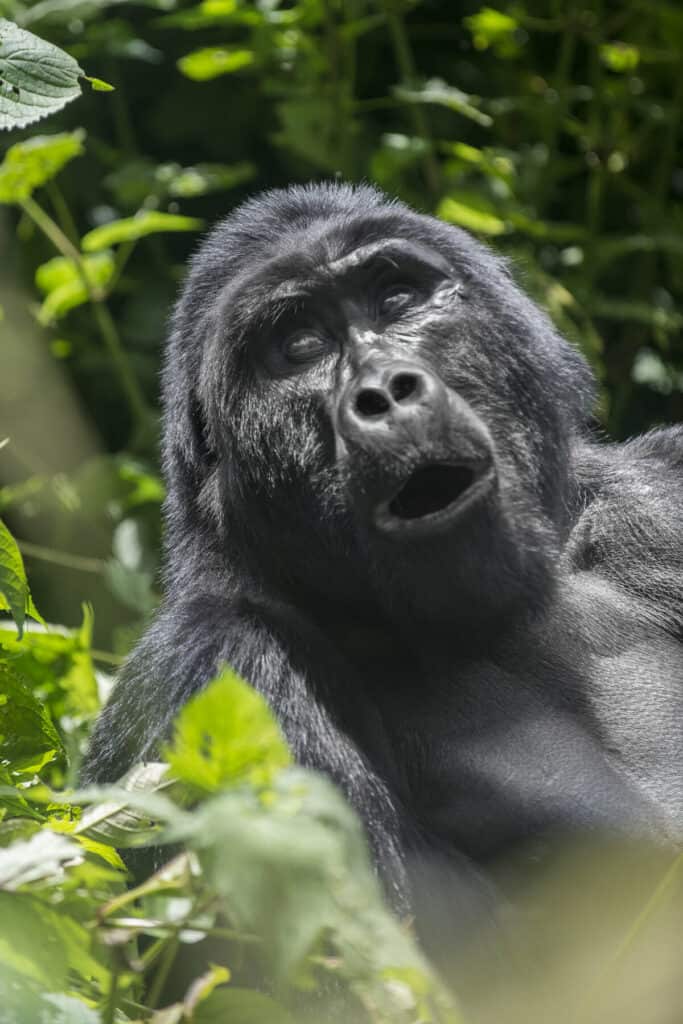
Track gorillas in Bwindi Impenetrable National Park, Uganda
You will never forget your first sight of mountain gorillas in Uganda’s Bwindi Impenetrable National Park.
Bwindi Impenetrable National Park, home to nearly half of the world’s remaining mountain gorillas, offers an unparalleled safari experience. This ancient rainforest, a UNESCO World Heritage site, conceals one of nature’s most intimate wildlife encounters: tracking gorillas in their natural habitat. Nothing compares to the moment you first lock eyes with a gorilla family as they forage and play, the dominant silverback watching over them with quiet strength. The trek to reach these creatures can be challenging, but the reward – standing mere metres from them – is unforgettable.
Beyond the gorillas, Bwindi is a biodiversity hotspot, harbouring over 120 mammal species, including forest elephants and rare primates like the L’Hoest’s monkey. With over 350 bird species, it’s also a haven for birdwatchers. The dense vegetation and rugged terrain make every trek an adventure, offering a deep immersion into one of Africa’s last truly wild landscapes.
The experience extends beyond wildlife, with opportunities to engage with local culture and enjoy Uganda’s natural splendour. The Batwa Experience in Buhoma offers insight into the indigenous Batwa people’s forest-based lifestyle. Projects like Ride 4 a Woman empower local women through craft and hospitality, while the Coffee to Cup Experience showcases the region’s coffee production, allowing visitors to support local farmers and communities. Each visit contributes to both conservation and community well-being, making Bwindi a truly enriching destination.
How to do it
The best time to visit Uganda is between January and February and July until September. Fly to Entebbe airport where you will be met by your guide who will accompany you to the Bwindi Impenetrable National Park. Trekking permits are limited and highly sought after, so it’s essential to book well in advance.
Tours begin from four entry points – Buhoma, Ruhija, Nkuringo, and Rushaga – each offering access to different gorilla families. A moderate level of fitness is required for trekking, and experienced guides accompany each group to ensure a safe and respectful interaction with the gorillas.
Travel with a responsible operator that emphasises conservation, as the fees from gorilla trekking directly contribute to the protection of these endangered animals and their habitat
Manya Africa Tours runs several different trips to see the gorillas in Bwindi Impenetrable Forest in Western Uganda. A popular example is the ‘12 Days Pearls of Uganda Safari’, which includes 11 nights full board in mid-range accommodation. Prices start from £2581 per person and you can find the full details here.
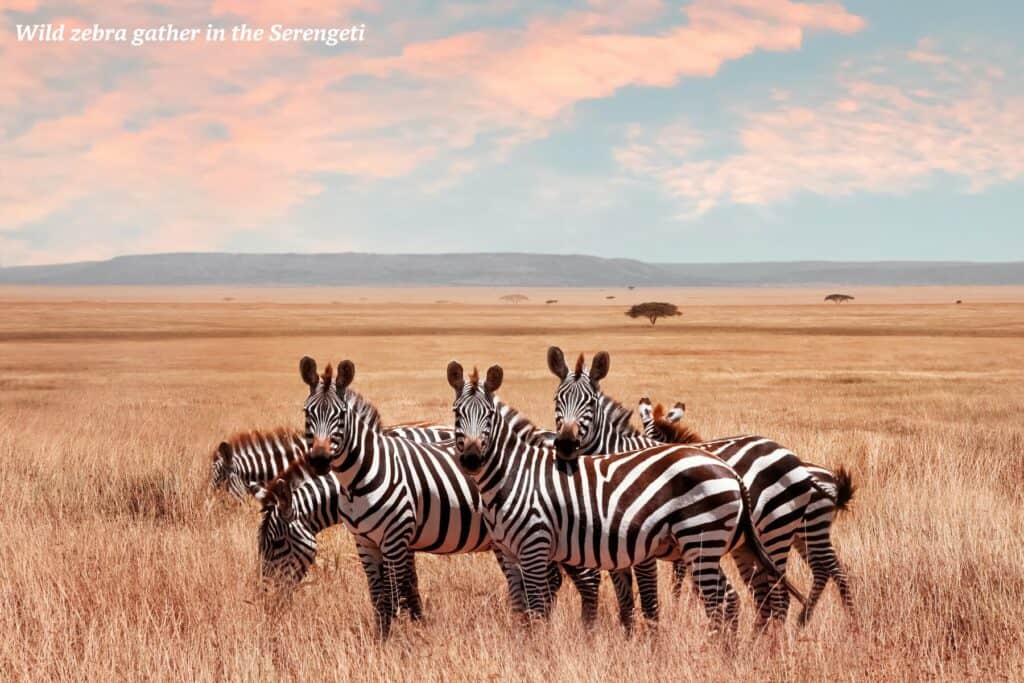
Explore the best of Rwanda and Tanzania
Combine the misty volcanoes of Rwanda with the sweeping plains of Tanzania to create one of the best safaris in Africa.
A joint safari to Rwanda and Tanzania gives you the best of both worlds. Start your adventure in Rwanda’s Volcanoes National Park, where the chance to track mountain gorillas through lush bamboo forests awaits. These gentle giants reside on the slopes of the Virunga Mountains, and the experience of watching a gorilla family up close is as humbling as it is thrilling. Alongside gorillas, golden monkeys swing through the treetops, as yet another symbol of the biodiversity of Rwanda.
From Rwanda’s rugged highlands, fly south to the iconic savannahs of Tanzania. Here, the endless Serengeti stretches out before you, home to the world’s greatest wildlife migration. Witness the drama of wildebeest and zebras crossing rivers, pursued by crocodiles, as they make their way through the vast plains in search of greener pastures. The Serengeti is a predator’s paradise, where lions, leopards, and cheetahs roam freely, making for some of the most exhilarating wildlife viewing on the planet. Find out more in our definitive guide to Tanzania’s national parks.
Finally, don’t miss the Ngorongoro Crater, an ancient caldera teeming with wildlife. This unique landscape offers a microcosm of Tanzania’s diverse ecosystems, where rhinos, elephants, and buffalo graze alongside flamingos in the crater’s soda lakes. It’s simply one of the best safaris in Africa.
How to do it
The best time for this dual safari is from June to October, when Rwanda’s dry season offers the best gorilla trekking conditions and the Great Migration is in full swing in Tanzania. Gorilla permits in Rwanda’s Volcanoes National Park are limited, so book well ahead to secure your spot.
After gorilla trekking, direct flights connect Kigali to Tanzania’s safari hubs like Arusha or the Serengeti. A typical trip begins with gorilla tracking in Rwanda before heading to Tanzania for the Serengeti and Ngorongoro, offering a seamless combination of jungle and savannah experiences.
For an unforgettable end, add a few days on the white beaches of Zanzibar, where the Indian Ocean’s turquoise waters provide a relaxing finale to your safari. Travel with a reputable tour operator that specialises in cross-border safaris to ensure a smooth, well-coordinated journey. This adventure also contributes to conservation efforts in both countries, helping to protect the incredible wildlife you’ll encounter along the way.
Kagera Safaris organises safaris in Uganda, Rwanda, Kenya and Tanzania. A popular option is the combination of gorilla trekking in Rwanda and safari in Serengeti, Tanzania. This 10-day safari is a private tour that departs any time of the year. You can choose to stay in mid-range or luxury lodges. Prices start from £5620 per person and you can find full details here.
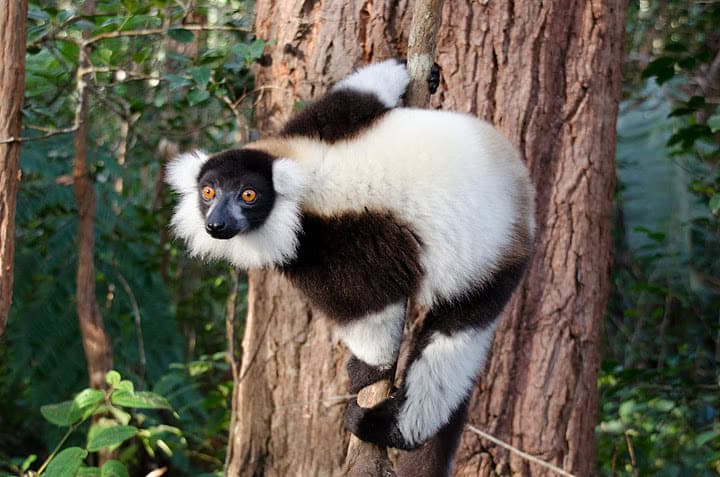
Get lost on the ‘Eighth Continent’ of Madagascar
Find quirky lemurs, colourful chameleons, and towering baobabs on a safari in Madagascar, where wildlife encounters are unlike anywhere else on Earth.
Madagascar, often called the “Eighth Continent,” is home to an astonishing array of species found nowhere else on the planet. Around 90% of the island’s flora and fauna is endemic, meaning a safari here offers sightings impossible to find in other countries, from the dancing sifaka lemur to the strikingly camouflaged leaf-tailed gecko. And it doesn’t stop there. Madagascar has one thousand species of orchids and 286 of birds, for example, of which 110 are endemic.
Why is this? This unique wildlife results from different patterns of evolution, thanks to the island’s isolation from the African mainland.
One of Madagascar’s most famous residents is the lemur. Whether it’s the ring-tailed lemurs basking in the sun at Isalo National Park or the indri lemurs calling through the misty rainforests of Andasibe-Mantadia, these charismatic primates will steal the show. No trip is complete without witnessing their playful antics in their natural habitat.
Madagascar’s varied landscapes are as diverse as its wildlife. From the spiny forests of the south to the lush rainforests of the east, the island’s ecosystems are breathtaking. You’ll explore rugged canyons, pristine beaches, and the iconic Avenue of the Baobabs, where ancient trees stretch into the sky, creating a timeless atmosphere at sunset.
And let’s not forget the reptiles. The island is home to half the world’s chameleon species, many of which display an astonishing range of colours and sizes. The Madagascar day gecko and other unusual reptiles can be spotted in the tropical forests, adding to the island’s biodiversity.
Beyond wildlife, Madagascar’s culture is a rich blend of African and Asian influences, with strong traditions and warm hospitality. Visit local markets, explore remote villages, and witness the island’s traditional “famadihana” (turning of the bones) ceremonies, which offer insight into the Malagasy way of life.
How to do it
The best time to visit Madagascar is during the dry season from April through the end of November, when wildlife is easier to spot and the weather is more pleasant for exploring the island’s diverse terrain. From the rainforests of Andasibe to the beaches of Nosy Be, there’s something for every type of traveller.
Madagascar’s infrastructure is developing, so internal flights or guided tours are the most convenient ways to navigate the island. A typical itinerary might include time in the highland rainforests, the semi-arid landscapes of the southwest, and the pristine coastal waters, where you can snorkel among coral reefs.
Choose a responsible tour operator, as many species on the island are endangered due to habitat loss. By visiting, you can contribute to conservation efforts that protect Madagascar’s fragile ecosystems and help preserve its incredible biodiversity for generations to come.
Remote River Expeditions – Madagascar is a dependable Madagascar based tour operator which supports local communities and charities for a sustainable future for Madagascar. Their award-winning ‘Island of Contrasts – East Meets West’ Tour allows travellers to discover the best of both coasts: the exotic rainforest of the east and the unique flora and fauna of the dry western forest. They offer tours throughout the year ranging from 5 to 18 days with prices starting at £125 per person, per day. You can find the full details here.

Traverse the Namib Desert in Namibia
In the otherworldly landscapes of the Namib Desert, red sand dunes, ancient canyons, and desert-adapted wildlife create a safari like no other.
The Namib Desert, one of the oldest in the world, is a place of striking beauty and extreme contrasts. Here, towering dunes stretch endlessly into the horizon, their fiery red and orange hues shifting with the changing light. Sossusvlei, with its iconic white salt pan framed by dramatic dunes, is the heart of this desert, where you can witness the surreal sight of dead acacia trees standing like sculptures against a backdrop of endless sand.
Despite its harsh conditions, there are plenty of reasons to visit Namibia, and the Namib is teeming with life. You might spot the famous desert-adapted elephants, which roam vast distances in search of food and water. These resilient giants are a testament to nature’s ability to thrive in even the most arid environments. Keep an eye out for oryx, springbok, and the elusive Hartmann’s mountain zebra, all of which have adapted to survive in this seemingly inhospitable landscape.
Along the coast, the desert meets the Atlantic Ocean in a dramatic display of nature’s contrasts. The Skeleton Coast, named for the shipwrecks that dot its shores, offers a chance to see colonies of Cape fur seals, while brown hyenas and jackals patrol the beaches. Inland, the ancient rock art of Twyfelfontein provides a glimpse into the history of the region’s first inhabitants.
The Namib is a land of vast, open spaces and solitude, where the silence of the desert is only broken by the wind and the occasional call of a jackal. A safari here is not just about the wildlife – it’s about immersing yourself in the stark beauty of one of the world’s most unique ecosystems.
How to do it
The best time to visit the Namib Desert is during the cooler months from May to October, when temperatures are more comfortable for exploring. Namibia has a well-developed network of lodges and campsites, with many luxury camps offering guided desert safaris and the chance to learn about the unique flora and fauna of the region.
Sossusvlei is easily accessible from the capital, Windhoek, via charter flights or a scenic drive. For a more remote and rugged experience, head to the Skeleton Coast or the more remote dunes of the Namib-Naukluft National Park. Whether you’re travelling by 4×4, foot, or hot air balloon, exploring the Namib Desert offers a safari that is as much about the surreal landscape as it is about the wildlife that calls it home.
Ensure that your safari is eco-friendly, as the delicate desert ecosystem is sensitive to human impact. Many lodges support conservation efforts, helping to protect this ancient wilderness for generations to come.
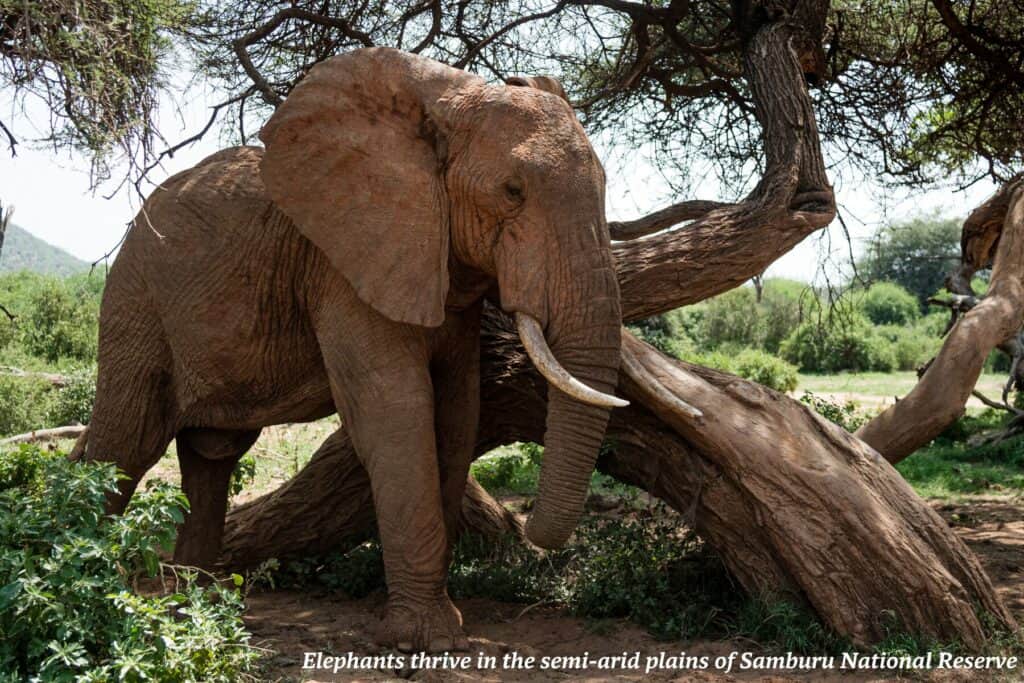
Visit the real Pride Rock in Kenya
Meet Simba and the gang in the secluded riverbanks and rugged hills of Sasaab and get a glimpse into Samburu culture in northern Kenya.
Perched above the Ewaso Nyiro River and set against the backdrop of the arid Samburu landscape, Sasaab offers a truly unique safari experience. This luxury lodge lies just outside Samburu National Reserve, where Kenya’s “Northern Five” – Grevy’s zebra, reticulated giraffe, Beisa oryx, Somali ostrich, and gerenuk – thrive in the semi-arid plains. These species, rarely seen in other regions, make a Sasaab safari both exclusive and thrilling.
Game drives and guided walks take you through the striking wilderness, where towering doum palms and rolling hills provide a home for a variety of wildlife, including elephants, lions, and leopards. But the magic of Sasaab extends beyond the Big Game. It’s here, in this lesser-travelled part of Kenya, where you can immerse yourself in the culture of the Samburu people. Visit local villages and experience traditional ceremonies, learning about their rich heritage and strong connection to the land.
A safari at Sasaab also brings adventure. The nearby Laikipia Plateau offers opportunities for camel trekking, while the river below the lodge invites the brave to take a dip in its cool waters. For those seeking a different perspective, rise with the sun in a hot air balloon and drift over the vast savannah and rugged escarpments, witnessing the beauty of Kenya’s northern frontier from the sky.
Sasaab’s remote location offers the perfect blend of luxury and wilderness. With only a few lodges in the area, you’ll experience an intimate connection with nature, whether you’re sipping sundowners as elephants drink from the river or relaxing in your private plunge pool while gazing at the Samburu plains.
How to do it
The best time to visit Sasaab is during Kenya’s dry seasons, from June to October and January to February, when wildlife is easier to spot and the weather is ideal for outdoor activities.
Sasaab is a short flight from Nairobi, landing in either Samburu or Buffalo Springs airstrip, followed by a scenic drive to the lodge. In addition to game drives, walking safaris, and cultural visits, you can explore the region by camel or horseback for a truly off-the-beaten-path experience.
Sasaab is part of the Northern Rangelands Trust, which supports conservation and community initiatives across northern Kenya. By choosing Sasaab, you directly contribute to the protection of wildlife and the empowerment of local communities, ensuring the sustainability of this incredible ecosystem for future generations.
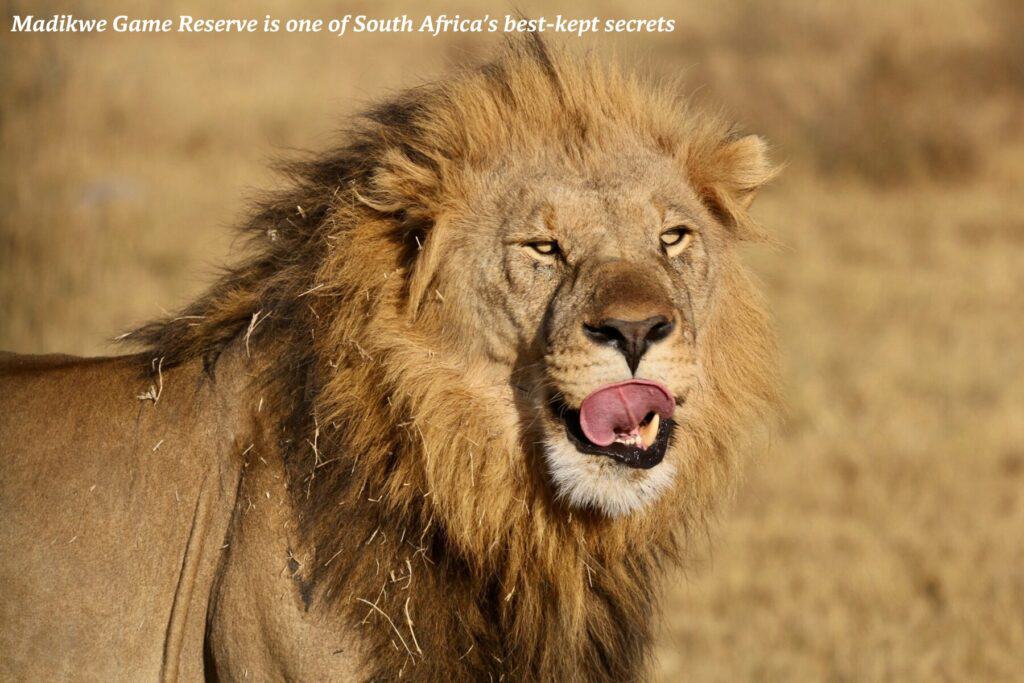
Immerse yourself in the untouched landscapes of the Madikwe Game Reserve, South Africa
Swap the well-trodden paths of South Africa’s busier parks for the unspoiled wilderness of Madikwe Game Reserve, where Big Five sightings, luxurious lodges, and malaria-free safaris await.
Tucked away in the country’s northwest, near the Botswana border, Madikwe Game Reserve is one of South Africa’s best-kept secrets. Spanning over 75,000 hectares, Madikwe’s diverse landscape – ranging from savannah and woodlands to rocky outcrops – provides a haven for an array of wildlife. The reserve is home to all of the Big Five (lion, leopard, elephant, buffalo, and rhino), but it’s also known for its thriving population of wild dogs, one of Africa’s most endangered predators. Watching these highly social and intelligent animals hunt in packs is an experience that few other reserves can offer.
Madikwe’s exclusivity adds to its appeal. With a limited number of lodges and no self-drive options, the reserve offers a more intimate and uncrowded safari experience. Game drives are led by expert guides who track elusive species such as cheetahs and hyenas across the rugged terrain. The absence of large tourist numbers allows for quieter, more meaningful wildlife encounters, whether you’re observing a lion pride on the prowl or a herd of elephants gathering at a waterhole at sunset.
Beyond game viewing, Madikwe’s landscape is striking in its beauty. The reserve’s location in a transition zone between the Kalahari and Lowveld means that it boasts a unique mix of flora and fauna, with plenty of opportunities for photography. Whether you’re admiring the red sands of the Kalahari or the dense bushveld teeming with life, Madikwe’s scenic diversity ensures there’s always something new to see.
How to do it
Madikwe is a year-round destination, though the dry winter months (May to September) offer optimal conditions for wildlife viewing as animals congregate around water sources. It’s also a malaria-free reserve, making it a great choice for families with children or travellers seeking peace of mind.
The reserve is easily accessible from Johannesburg, with a four-hour drive or a short charter flight directly into the park. Many of Madikwe’s lodges offer luxury accommodations, from family-friendly options to exclusive, adults-only retreats.
Conservation plays a central role in Madikwe’s management. Established as a community-driven project, the reserve has successfully reintroduced many species that were once wiped out in the area. By choosing a safari in Madikwe, you contribute to these ongoing efforts, helping to preserve one of South Africa’s most remarkable and biodiverse reserves for future generations.
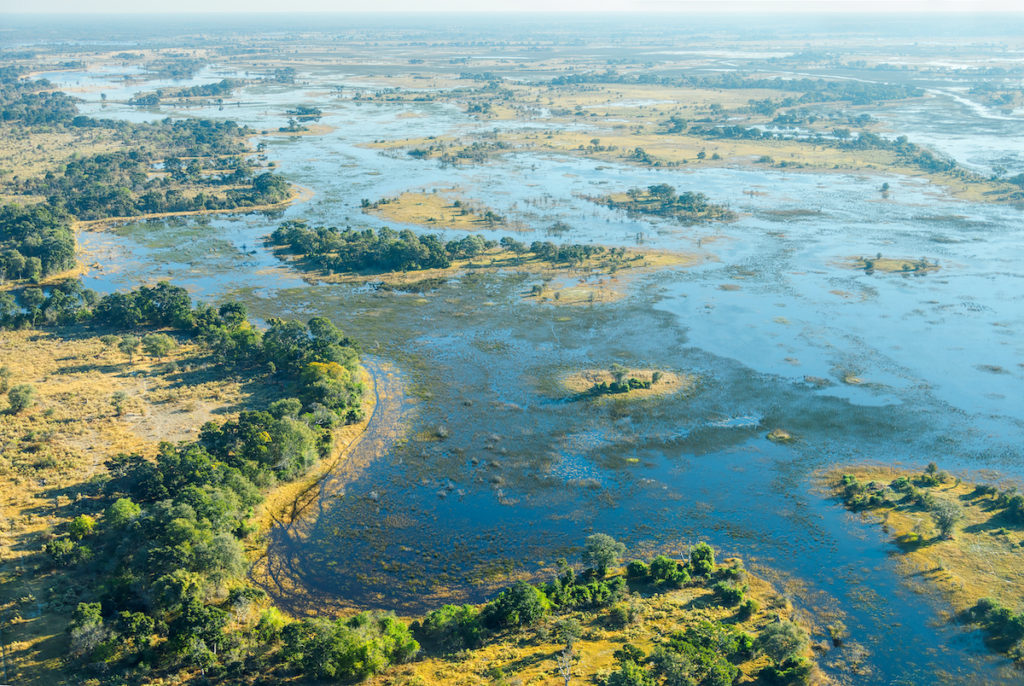
Float along the Okavango Delta in Botswana
Enjoy the gentle glide of a mokoro, as you explore the winding waterways and lush islands of Botswana’s Okavango Delta, one of Africa’s most extraordinary wetland ecosystems.
A mokoro safari offers a completely different perspective of the wild. These traditional dugout canoes, poled silently by expert guides, take you deep into the heart of the Okavango Delta’s labyrinth of reed-fringed channels, where you’ll drift through crystal-clear waters teeming with life. As you glide past lily pads and papyrus-lined shores, you may spot elephants wading, hippos surfacing for air, or a shy sitatunga antelope moving through the shallows.
The quiet nature of a mokoro safari allows for intimate wildlife encounters that are impossible to experience on a land safari solely dedicated to observing the Big Five in Botswana. You’ll often find yourself eye-to-eye with tiny frogs clinging to reeds, while birds like African jacanas, malachite kingfishers, and fish eagles swoop overhead. The Delta’s birdlife is nothing short of spectacular, with over 400 species recorded in the area, making a mokoro safari perfect for keen birdwatchers.
Beyond the wildlife, a mokoro safari immerses you in the tranquil rhythm of the Delta. The only sounds are the soft swish of the paddle and the call of the wilderness around you. Unlike traditional game drives, the pace here is slow, giving you time to truly appreciate the pristine beauty of one of the world’s largest inland deltas.
How to do it
The best time for a mokoro safari is from May to October, during the Delta’s flood season, when the waterways are at their fullest. The Delta is most accessible by charter flights from Maun, and many of the luxury camps in the region offer mokoro excursions as part of their safari packages.
A typical mokoro safari involves both short day trips and longer excursions with overnight stays on remote islands, giving you the chance to explore deeper into the Delta’s remote regions. Camps are often set on secluded islands, providing a base for mokoro safaris, game walks, and boat trips.
By choosing a mokoro safari with a responsible operator, you’ll support eco-friendly tourism that helps protect this fragile environment. Many guides are local experts from the Delta’s indigenous communities, adding a cultural dimension to your safari as they share stories of life in one of Africa’s most unique ecosystems.
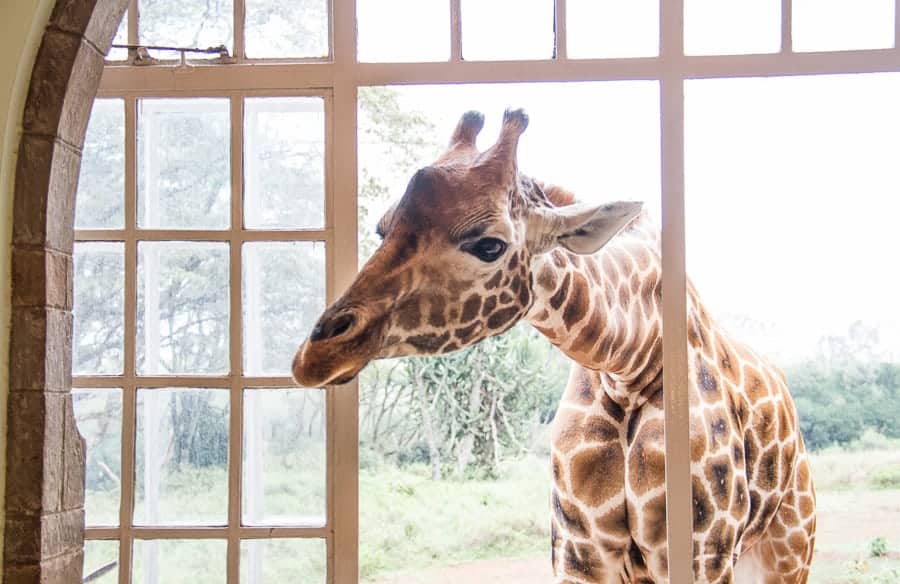
Make friends with the wildlife at Giraffe Manor in Kenya
Experience a charming blend of wildlife and luxury at Giraffe Manor in Nairobi, Kenya, where you can enjoy breakfast with some very special guests.
Giraffe Manor is not your typical safari experience. Located just a short drive from Nairobi’s city centre, this historic 1930s mansion has been transformed into a boutique hotel where endangered Rothschild’s giraffes roam freely. The manor’s unique appeal lies in its resident giraffes, who often poke their long necks through the windows and doors in hopes of a morning treat.
At Giraffe Manor, the giraffes are not just visitors – they are part of the experience. Breakfast is a delightful affair as these gentle giants peer into the dining room, and you can feed them by hand, making for some unforgettable photo opportunities. The property’s lush gardens are also home to these majestic animals, and you can often see them wandering gracefully around the grounds.
In addition to giraffe encounters, Giraffe Manor offers a touch of classic elegance and comfort. The manor itself exudes colonial charm, with its beautifully furnished rooms and period features. Guests can relax in luxurious surroundings, enjoy high tea in the sunlit conservatory, or stroll through the manicured gardens.
The manor’s conservation efforts extend beyond its own grounds. Giraffe Manor is part of the Giraffe Centre, a local initiative dedicated to the protection and breeding of Rothschild’s giraffes. The centre’s educational programs and outreach efforts play a crucial role in the survival of this endangered species.
How to do it
Giraffe Manor is best visited as part of a Kenya safari or as a standalone luxury retreat in Nairobi. Given its popularity, booking well in advance is essential, as the manor’s limited number of rooms ensures an exclusive and intimate experience.
The best time to visit Nairobi is during the dry seasons from June to October and January to February, which offer pleasant weather and clear skies. Giraffe Manor is easily accessible from Nairobi’s Jomo Kenyatta International Airport, making it a convenient option for travellers looking to combine urban exploration with unique wildlife encounters.
By staying at Giraffe Manor, you contribute directly to giraffe conservation efforts and enjoy a truly unique safari experience that combines luxury, history, and the magic of interacting with one of Africa’s most iconic animals.
More information about the best safaris in Africa
To make sure you get the most of your safari, you need to make sure that you go prepared. That’s why we’ve put together a comprehensive safari packing list with everything you need for a successful safari – from sun-hat to sandals.
Still can’t choose which safari is best for you? Here at Bradt, we’ve covered the continent of Africa extensively across dozens of different titles. To learn more about these safaris or more of what the continent has to offer, pick up a copy of one of our guidebooks from Africa here.
Or check out the options below…


